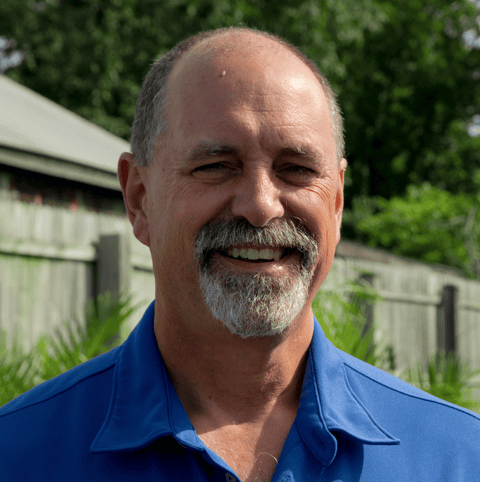
Pea Gravel vs Rubber Mulch vs Wood Chips: Which Is Best For Playground Surfaces
Think back for a minute to your favorite playground memories. We’ll wait.
Remember swinging so high it felt like you were a bird in the sky? Then hitting the ground with a big thump?
Ouch. Which brings us to the best surface material for playgrounds.
Pea gravel vs rubber mulch vs wood chips — what’s the best surface for playgrounds?
Hop off the swing and let’s take a look.
Best Surface for Playgrounds: A Look at Pea Gravel
Pea gravel is perfectly named — smooth, round, clean stones the size of peas. It offers a natural, organic appearance.
Pros:
- It lasts for years before it needs to be freshened up with a new layer.
Cons:
- Pea gravel feels pretty hard in cold weather.
- It doesn’t comply with the Americans with Disabilities Act requirements, because it’s difficult for wheelchair users to navigate over. (More about ADA requirements later.)
Maintenance: Remove occasional weeds and leaf litter; rake to keep it at a consistent depth; top with new layer every few years.
Cost: $70-$80 per yard
Best Surface for Playgrounds: A Look at Rubber Mulch
Rubber mulch is made from recycled tires. Tires are cleaned, ground up to a consistent size and any wire or fiber are removed. Colorful coatings can be added during the manufacturing process.
Pros:
- It’s less abrasive than other options when kids are playing and falling.
- It doesn’t break down over time, so rarely needs a fresh top layer.
Cons:
- It’s much more expensive than other options.
- Rubber retains heat, so it can get uncomfortable in hot weather.
Maintenance:
- Regularly remove any weeds, leaves or sticks.
- Rake rubber mulch to loosen layers that may have become compacted over time
- Spray with water to remove any dust or dirt that collects.
Cost: $400-500 per yard
Our Pick for the Best Playground Surface: Engineered Wood Chips
Here at Level Green, we surface playgrounds with engineered wood chips, often called engineered wood fiber.

They’re tumbled in a machine so the corners of each chip are rounded, and they’re softer than typical wood chips used for landscaping.
Pros:
- Low upfront cost
- They’re readily available
- They’re ADA compliant
- Chips are slip-resistant and give a soft, springy cushion to the ground
- Engineered wood fiber is biodegradable and made from renewable resources
Cons:
- They need to be topped off with a fresh layer each year.
Maintenance: Chips need to be freshened up each year with a fresh layer, but it doesn’t cost as much as the original installation.
While the original depth is typically 6-8 inches, it’s topped off with just 2-3 inches of fresh chips.
Cost: $25-45 per yard
Best Surface for Playgrounds: ADA Compliance
All newly built or altered public or commercial playgrounds are required to comply with The Americans with Disabilities Act, signed in 1990 to ensure that Americans with disabilities receive equal opportunities.
Playground owners are responsible for creating playgrounds all children can use.
When it comes to playground surfaces, ADA sets guidelines, including a requirement that an individual in a wheelchair can navigate easily across the surface and the surface can absorb impact from a fall.
Engineered wood fiber and rubber mulch are typically ADA compliant, but pea gravel is not.
Ask About Certification
As you weigh the benefits of pea gravel vs rubber mulch vs wood chips, be sure the playground surface material you use complies with guidelines set by ASTM International, formerly known as the American Society for Testing and Materials.
The international standards organization develops and publishes technical standards for a wide range of materials, including playground surface materials.
Your vendor should be able to tell you if the material they use is certified, which means it’s been tested for safety, including how well it can absorb impact when a child falls from playground equipment.
Best Surface Material for Playgrounds? Trust Level Green
Helping to create playgrounds for our HOA, school, and municipality customers is fun — but we take it seriously.
Pea gravel vs rubber mulch vs wood chips? We’re happy to go over your options and help you choose the best playground surface material for your needs.
Race you to the swing set.
If you’re not already a Level Green Landscaping client, we’d love to add you to our growing list of happy customers. Our focus is on commercial properties like offices, mixed-use sites, HOAs, municipalities and institutions in Maryland, Washington DC and parts of Virginia.
Contact us at 202-544-0968. You can also request a free consultation online to meet with us one-on-one.
We’d love to hear from you.
Image Source: Pea Gravel, Rubber Mulch, Engineered Wood Chips

Douglass Delano
Doug Delano (and Bill Hardy) opened Level Green Landscaping LLC in 2002 to offer Washington DC, Maryland and Virginia reliable commercial landscape maintenance services.

